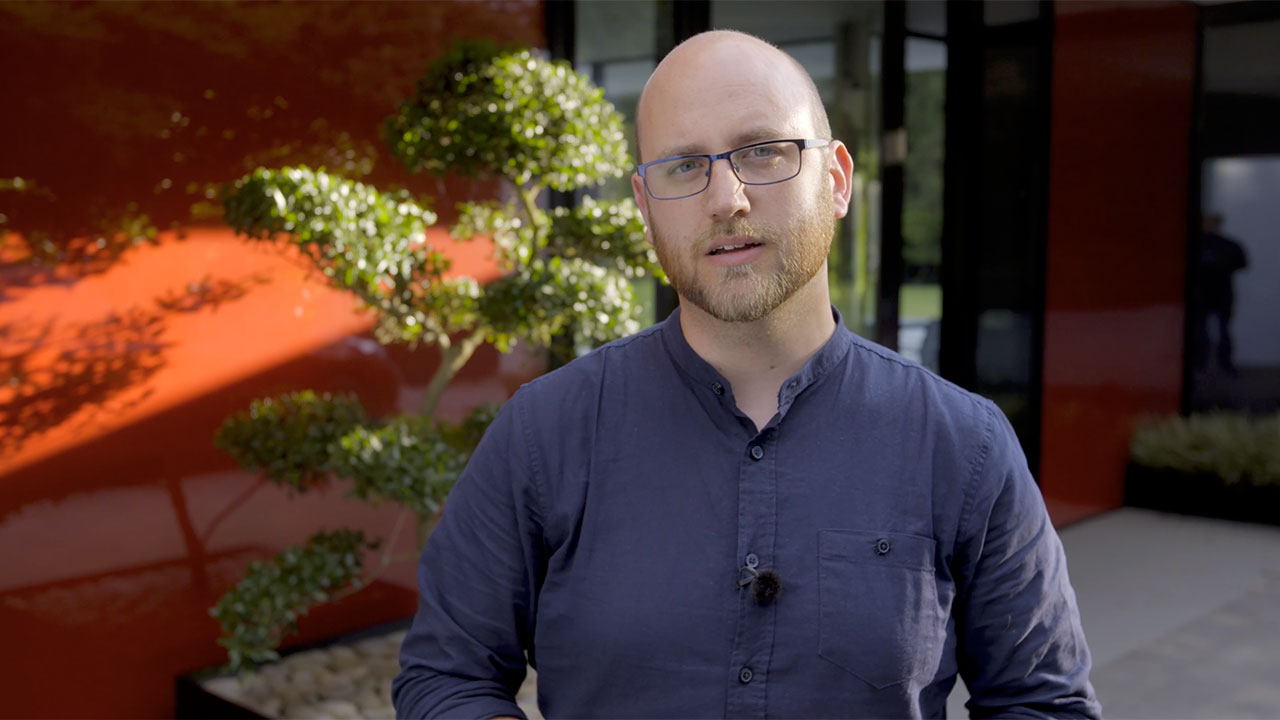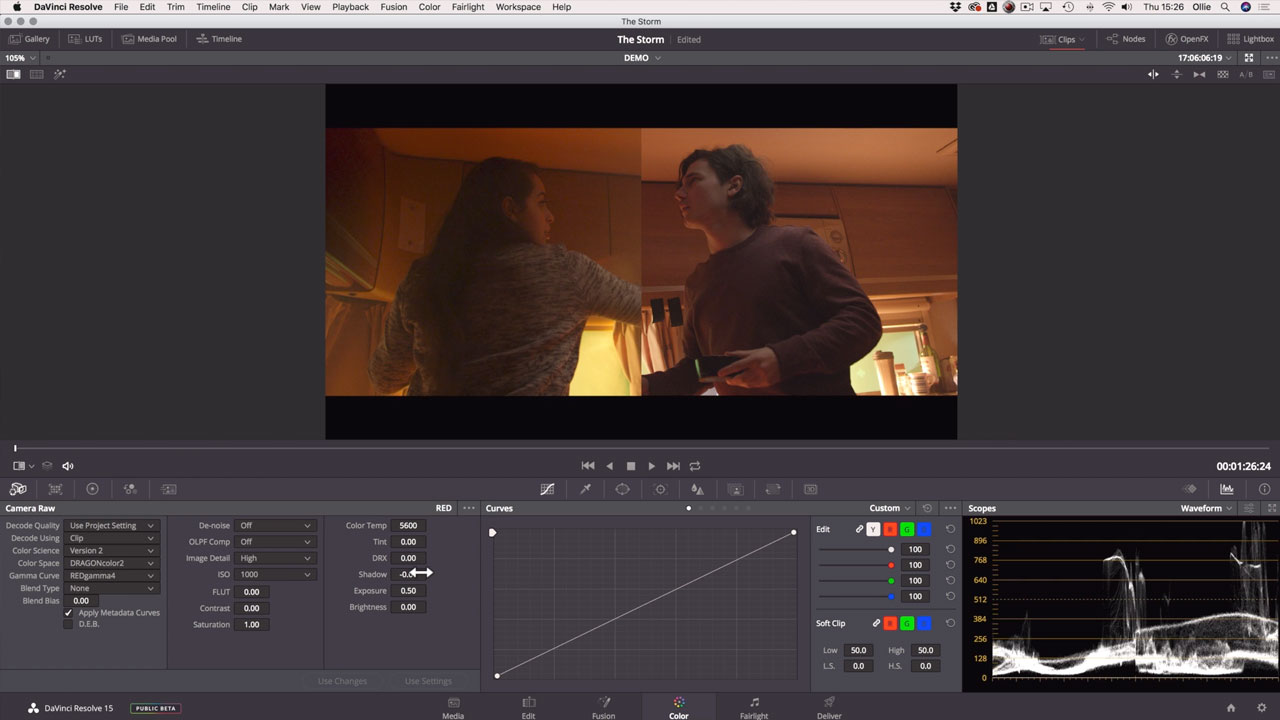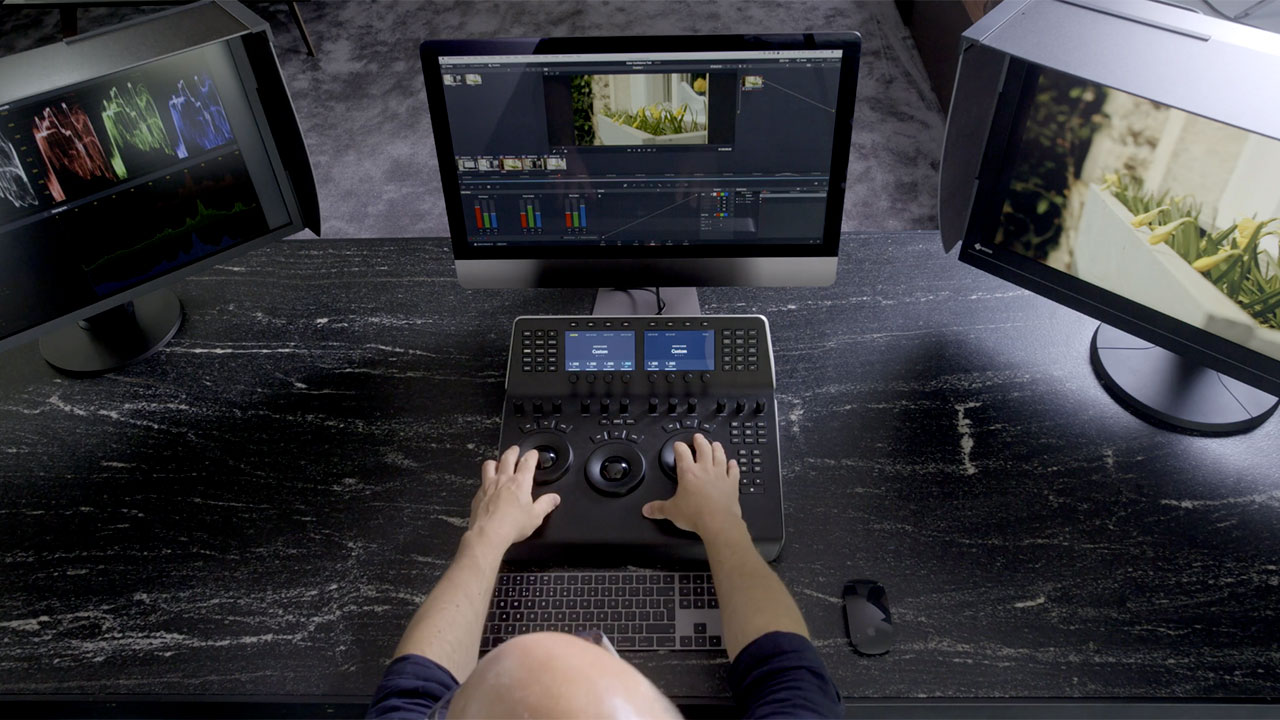
Ollie Kenchington, cinema5D contributing writer, lead colorist at Korro Films and Blackmagic Certified Trainer at Korro Academy, has recently released his second color-grading course on MZed, called “Mastering Color” (reviewed here). We took the opportunity to ask Ollie a few questions about color grading, his start in the industry and some useful advice he would give to aspiring colorists. Here are his answers.
How did you get into color grading?
OLLIE: I’ve been professionally color grading for over a decade, but I knew that I wanted to be a colorist after I watched a making-of documentary for the Lord Of The Rings: The Fellowship of the Ring, back in 2002. There was a segment about Peter Doyle, who was the senior colorist on all of the Lord of the Rings films. I remember there was a scene in the mines of Moria, and Peter was color grading Legolas’ eyes, to make them look more blue. He tracked the eyes as Legolas jumped off Balin’s tomb, and I remember being absolutely amazed by it and just thinking to myself that that’s what I wanted to do. So I did some digging and found Peter’s email address and contacted him. Amazingly, not only did he reply, he actually offered me a job as his color assistant on the Return of the King!
So I’m the idiot that turned down the Return of the King and the Prisoner of Azkaban. Not the most auspicious start to my career!
Unfortunately, for various reasons, it didn’t work out, and I never got to fly off to New Zealand. However, about a year later, Peter came to London and contacted me. He said he had another big project coming up and it would be great if I could be his color assistant on this new project. Agonizingly, I decided to turn him down because, by that point, I had a well paid job working with Apple and also wasn’t sure if I wanted to limit myself to just color-grading, when I loved editing and shooting so much too. I later found out that the film he was asking me to work with him on was the Prisoner of Azkaban (Peter Doyle went on to color grade all of the rest of the Harry Potter films, and a long list of other huge films), so I’m the idiot that turned down the Return of the King and the Prisoner of Azkaban. Not the most auspicious start to my career!
How did you talk Peter Doyle into actually giving you a shot?
OLLIE: I think he appreciated the fact that someone gave a crap about color grading! These days everyone knows about color grading, but back then (2002/2003) digital color-grading was still in its infancy. I think he was just flattered that someone saw that DVD and was interested enough to internet stalk him and find out his e-mail address! I think it was as simple as that, just good timing.
What would be the best way to get into color grading nowadays, in your opinion?
OLLIE: I would say the best thing to do is just grade everything and anything you can! There will always be at least two or three short films, documentaries or passion projects being made somewhere near your location, at any one time. Anyone making a film on a shoestring budget will be desperate for people to color grade their projects. Building up a portfolio is the most important step in showing people what you can do. Whilst you develop your own style and build up your showreel, you also need to thoroughly study the tools and the theory behind your craft. I’m not saying bury your head in books and forget to work, you’ve got to get the balance right, but you need to develop your technical understanding and creative flair at the same time.
…if you can find a really good DP, someone that you really admire, that would be helpful. If you can get a relationship with them and get into the position where they want you to grade their work, and they’re shooting high quality content, that makes you look great, then that’s a real bonus.
Once you think you’ve mastered one aspect, take it up a level, dive deeper, research more, look what other colorists are doing and refine your skills. Get out there and network and meet other filmmakers and, if you can find a really good DP, someone that you really admire, that would be helpful. If you can get a relationship with them and get into the position where they want you to grade their work, and they’re shooting high quality content, that makes you look great, then that’s a real bonus. Because, unfortunately, you could be the world’s best colorist, but if you only work on really low budget productions and poor quality footage, it doesn’t look good in a showreel and it doesn’t look good as a showpiece for your talents. Which actually is ridiculous, as it takes more skill to make something poor look good, but unfortunately that’s the reality of it. So the better looking the footage that you can work with, the better your work will look. So yes, finding a good DP or director to buddy up with is a great step.
How would you weigh the importance of technical knowledge vs. aesthetic feel and experience for a colorist?
OLLIE: I think, although in other areas of filmmaking experience may trump technical skill – certainly I know loads of great DPs who aren’t very technically minded – I do feel that a colorist’s job is to be that person in the production and post-production workflow that is the technical person. They are the one that needs to know everything there is to know about gamuts, gammas, compression, how additive color works, how the human visual system works – a professional pixel peeper!
I do feel that a colorist’s job is to be that person in the production and post-production workflow that is the technical person
The thing that appeals to me about color grading is that it is such a nice blend of technical and creative. I enjoy both elements of it and I do think that a colorist, more than possibly anyone else, has to straddle that divide. They must be able to create depth in an image and richness and vibrance and support a narrative and all those creative things, but also understand the tools and the mechanics of it all. I don’t think you can be a colorist if you don’t have a grasp of both parts of that.
What is the best way to keep up-to-date as a colorist, apart from reading 1000+ pages of ITU specifications?
OLLIE: I think a lot of reading, a lot of following certain people and what they put out there. I read a lot of white papers. When I started out I read loads on Wikipedia about what the difference is between gammas and gamuts etc. I really want to stress, though, that I’m not talking from the point of view of somebody who now knows it all! I’m acutely aware that I know a small percentage of what there is to know and there are other people out there who know a hell of a lot more than I do. I am constantly learning from those people and relish the chance to be in a room with someone cleverer than me!
For me personally it’s a culmination of lots of different sources over many, many years
I think it really helped me, studying photography at college, to gain a good understanding of basic photographic techniques, particularly around exposure. There’s also a lot of understanding about color theory that I learnt through my fine art education. So for me personally, it’s a culmination of lots of different sources over many, many years. Going back to doing color theory sessions on my foundation course at art school in 1999, and everything that’s happened between then and now. And I’m aware that there’s so much more for me to learn, but it’s not like there’s one book that you can buy or there’s one course you can follow, it’s about tackling it all in stages and then slowly, over the years, connecting the dots and putting that into practice. See what happens when you try these things out. When you try and color grade for HDR for example, you can read endless sources of information about HDR, but until you’re actually doing it with an HDR monitor, it doesn’t make a huge amount of sense.
What distinguishes a good colorist from a bad one in your opinion?
OLLIE: I think that, overall, the most important thing is how good are they at taking a step back and seeing how their work affects and supports the narrative. A good colorist understands narrative structure, understands the impact of color on that structure and understands the importance of continuity within that structure. In a way, it’s the stuff that’s less obvious, it’s the stuff that’s more hidden and certainly it’s the stuff that’s less sexy. When you see those really cool tutorials about grading on YouTube, often the footage is really beautiful and fantastically well lit and they’re often working on just one shot, almost treating it like a photograph. Yeah, it may be impressive in the end, but that doesn’t tell me very much about that person as a colorist. It doesn’t tell me how well they work with the director and the DP, or how well they communicate with clients. Those are the sorts of things that I see in other colorists as a sign of their pedigree, far more than actually the look of their work.
A good colorist understands narrative structure, understands the impact of color on that structure and understands the importance of continuity within that structure. In a way, it’s the stuff that’s less obvious, it’s the stuff that’s more hidden and certainly it’s the stuff that’s less sexy.
Can a colorist have a style?
OLLIE: There are definitely things one can do with contrast and colors, playing with skin tones and other ‘memory’ colors, where everyone knows what it should look like, as well as working with certain palettes of colors, to establish a style. But, going back to what I’ve just said, if that style is arbitrary and it exists across multiple films for no reason, other than so you can say, ‘here is my style’, then I would argue that they’re not a particularly good colorist. If I think back, across all of the stuff I’ve graded over the years, there are very few of them where I’ve used the same style. In fact, most clients just want the image to look its best, they don’t want a style pushed in at all. The clients that do want a style, tend to have very specific notes about how skin tones are treated, how blacks are treated, how whites are treated, how greens and reds are treated, or how skies are treated. They don’t come in saying “I want orange and teal” or, “I want the Wes Anderson look”, because that’s arbitrary. It would be like creating a script by throwing in dialogue that you’ve taken from other films, and hoping that it makes a unique and original script. It doesn’t work that way.
What was the intention behind your ‘Mastering Color’ course for MZed?
OLLIE: My goal was to create a series of modules that identified and broke down the broad steps a colorist would take when developing an image. I wanted the concepts and workflow to be the star of the show, rather than the software, hardware or demo material I was using. I hope that these lessons can be used as a solid grounding in the art and science of color, upon which amateur colorists can build and develop their software skills, no matter which software they use. It is not intended to be a DaVinci Resolve course, as there are already tonnes of tutorials out there that show you which buttons to press to do x, y or z in Resolve. In my opinion, before you learn how to press a button, you should learn why you are pressing that button, and that’s exactly what ‘Mastering Color’ sets out to do.
Thank you for your time Ollie!
Ollie’s course is on MZed now. There are 7.5 hours of lessons (plus over 20GB of downloadable resources) in the course, and the first lesson is free to watch.
FULL DISCLOSURE: Ollie Kenchington is my fellow contributing writer to cinema5D. However the interview given here, was not influenced by that.
Are you a budding colorist? Does this answer some of your questions? Would you like more interviews like this, explaining different nuances and areas of the industry? Do you have other questions for Ollie? Let us know in the comments!




























